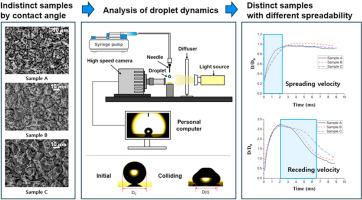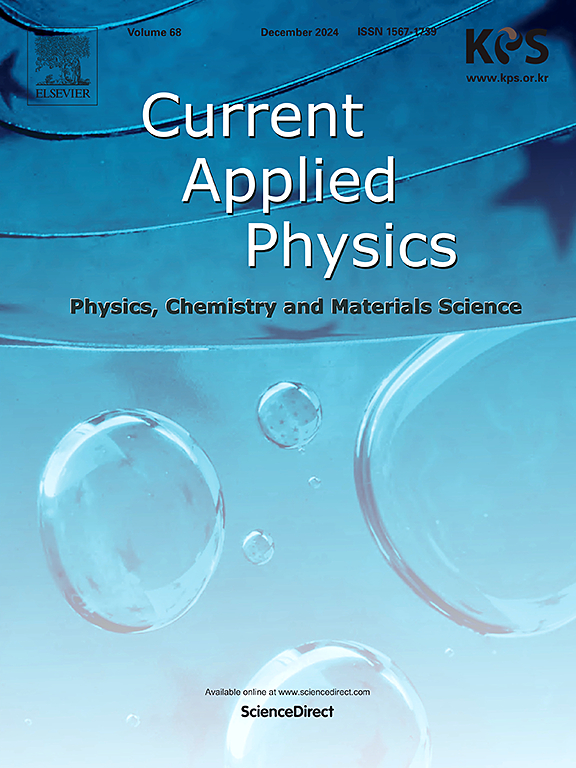通过液滴可展性变化测量结构影响的有效方法
IF 3.1
4区 物理与天体物理
Q3 MATERIALS SCIENCE, MULTIDISCIPLINARY
引用次数: 0
摘要
传统的接触角和迟滞测量常常不能区分同一材料表面之间的结构差异。在本研究中,设计了一种新的分析方法来克服这些限制。所提出的方法包括观察液滴在不同目标材料结构表面撞击时的行为,从而测量液滴在扩散(高韦伯数和动能条件)或后退(低韦伯数和动能条件)过程中的速度。这些速度特征动态地反映了结构的影响,为基于其结构区分表面提供了一种高度敏感的方法。该方法为表征各种应用中的表面结构提供了一种可靠有效的方法,有望在研究和工业中得到广泛应用。本文章由计算机程序翻译,如有差异,请以英文原文为准。

Effective method for measuring structural influence through changes in droplet spreadability
Conventional contact angle and hysteresis measurements often fail to distinguish structural differences between surfaces of the same material. In this study, a new analytical approach is designed to overcome these limitations. The proposed method involves observing the behavior of droplets upon their impact on the surface for different target material structures, thereby measuring the velocity of the droplet boundary during spreading (high Weber number and kinetic energy conditions) or receding (low Weber number and kinetic energy conditions). These velocity characteristics dynamically reflect structural influences, offering a highly sensitive approach for differentiating surfaces based on their structure. We anticipate that this method, which provides a reliable and effective way for characterizing surface structures in various applications, will be widely adopted in research and industry.
求助全文
通过发布文献求助,成功后即可免费获取论文全文。
去求助
来源期刊

Current Applied Physics
物理-材料科学:综合
CiteScore
4.80
自引率
0.00%
发文量
213
审稿时长
33 days
期刊介绍:
Current Applied Physics (Curr. Appl. Phys.) is a monthly published international journal covering all the fields of applied science investigating the physics of the advanced materials for future applications.
Other areas covered: Experimental and theoretical aspects of advanced materials and devices dealing with synthesis or structural chemistry, physical and electronic properties, photonics, engineering applications, and uniquely pertinent measurement or analytical techniques.
Current Applied Physics, published since 2001, covers physics, chemistry and materials science, including bio-materials, with their engineering aspects. It is a truly interdisciplinary journal opening a forum for scientists of all related fields, a unique point of the journal discriminating it from other worldwide and/or Pacific Rim applied physics journals.
Regular research papers, letters and review articles with contents meeting the scope of the journal will be considered for publication after peer review.
The Journal is owned by the Korean Physical Society.
 求助内容:
求助内容: 应助结果提醒方式:
应助结果提醒方式:


